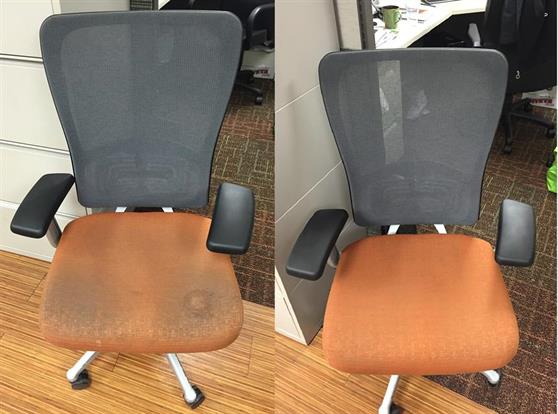Don’t Let Germs Hide in Fabric-Covered Cubicles and Seats

The morning routine is relatively straightforward across companies and industries. Even if some companies change it up by starting with standing meetings or group calisthenics, employees eventually get right down to work. What they don’t think about is how their surroundings, specifically the fabrics on their cubicle walls and seats, could affect their health.
Cushioned chairs and wall panels covered with textiles can become veritable breeding grounds for infections. Even organizations committed to pristine bathroom floors, gleaming entryways, and sanitized flat surfaces tend to overlook the value of deep cleaning cubicles. Accordingly, the fabrics begin to show wear marks and become stained, making it tough to foster an atmosphere with a high indoor air quality.
Unlike painted walls, cubbies require special treatment to maximize longevity, remove any lingering odors, and cut down on the spread of germs.
Getting Cubicles Truly Clean Saves Money, Resources, and Maybe Lives
Some facility and property managers hand-vacuum cubicle walls as part of a regular maintenance schedule. While it’s a great start, it won't remove deep-down dirt or airborne pollution trapped in the fibers. Cubicle walls (and movable walls covered in heavy-duty fabrics) act as filters. And just like the filter in a furnace, the debris within cubicle walls should be removed regularly or it will end up back in the air.
Really, it’s not hard to imagine how quickly a cubicle can become germ central.
Research shows that office desks and equipment carry 400 times the germ count of the average toilet seat. How many times a day do employees move from desk to desk, laying their hands on cubicles as they go? As viruses and bacteria travel, workers are exposed to everything from the common cold to the seasonal flu. And absenteeism costs organizations up to 22 percent of each sick worker’s annual salary per information from the Society for Human Resource Management.
Mold growth is also a problem on cubicle walls. Though it can be mitigated with spot-cleaning, routine maintenance is key to eliminating mildew before it contaminates any textile surface. Mold isn’t just an eyesore; it can make breathing difficult for some people. According to the Asthma and Allergy Foundation of America, about 10 people die per day due to asthma. That's reason enough to be concerned.
Aside from health issues, maintaining upholstered cubicles simply makes sense from an aesthetic perspective.
What client wants to buy from a supplier whose offices smell bad and are littered with dirty cubbies? Would a top job candidate take a position if she stepped foot in a foul-smelling, dirty office? Besides, nasty odors can be a calling card of volatile organic compounds (VOCs), which some textiles release into the air. Environmentally conscientious businesses often put a high priority on removing VOCs to foster a cleaner facility. Cubicle cleaning is a great place to start tamping down on VOCs.
Turning to MilliCare for Cubicle Care
Wondering how you'll be able to comprehensively adopt a cubicle care policy? You don't have to do it without help.
At MilliCare , our local, trained technicians treat cubicles like any other surface that contributes to the overall appearance, function, and wellness of a workspace. Not only can we apply our dry polymer–based encapsulation solutions to fabrics on seats and walls, but we can also remove embedded soil, bacteria, and germs as part of a customized Care Plan.
If your office space includes plenty of upholstered chairs and divider walls, let MilliCare help extend your capital investment while promoting a healthier workplace. Germs don't belong on the payroll; give loitering ones the heave-ho.